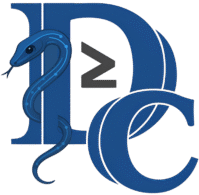Listen to this Post
How the CVE Works:
CVE-2025-29449 exploits Twonav v2.1.18-20241105’s insecure link identification function. Attackers craft malicious requests to extract sensitive data (e.g., user credentials, internal paths) by abusing improper input validation. The flaw leaks information via API responses or error messages, exposing system details unintended for public access. No authentication is required, making it a low-complexity attack. The CVSS 4.0 vector highlights network-based exploitation with high confidentiality impact.
DailyCVE Form:
Platform: Twonav
Version: 2.1.18-20241105
Vulnerability: Information Disclosure
Severity: Medium
Date: 04/25/2025
What Undercode Say:
Analytics:
- Exploitable via HTTP GET/POST requests.
- Impacts unpatched instances exposed to untrusted networks.
- Detection: Monitor abnormal response patterns (e.g., 200 OK with sensitive data).
Exploit Command:
curl -X GET "http://<target>/api/link?id=malicious_payload"
Mitigation:
1. Patch to v2.1.19+.
2. Implement input sanitization:
function sanitize_link_id($input) {
return preg_replace('/[^a-zA-Z0-9-]/', '', $input);
}
3. Restrict API access via .htaccess:
<Files "api/link"> Require valid-user </Files>
Detection Script:
import requests
response = requests.get("http://<target>/api/link?id=test")
if "internal_path" in response.text:
print("Vulnerable to CVE-2025-29449")
Log Analysis:
grep -E 'GET./api/link' /var/log/twonav/access.log | awk '{print $1, $7}'
WAF Rule:
location /api/link {
if ($args ~ "id=.[;|&]") {
return 403;
}
}
Impact Reduction:
- Disable debug mode in
config.ini:[bash] enabled = false
- Rotate exposed credentials immediately.
Sources:
Reported By: nvd.nist.gov
Extra Source Hub:
Undercode

